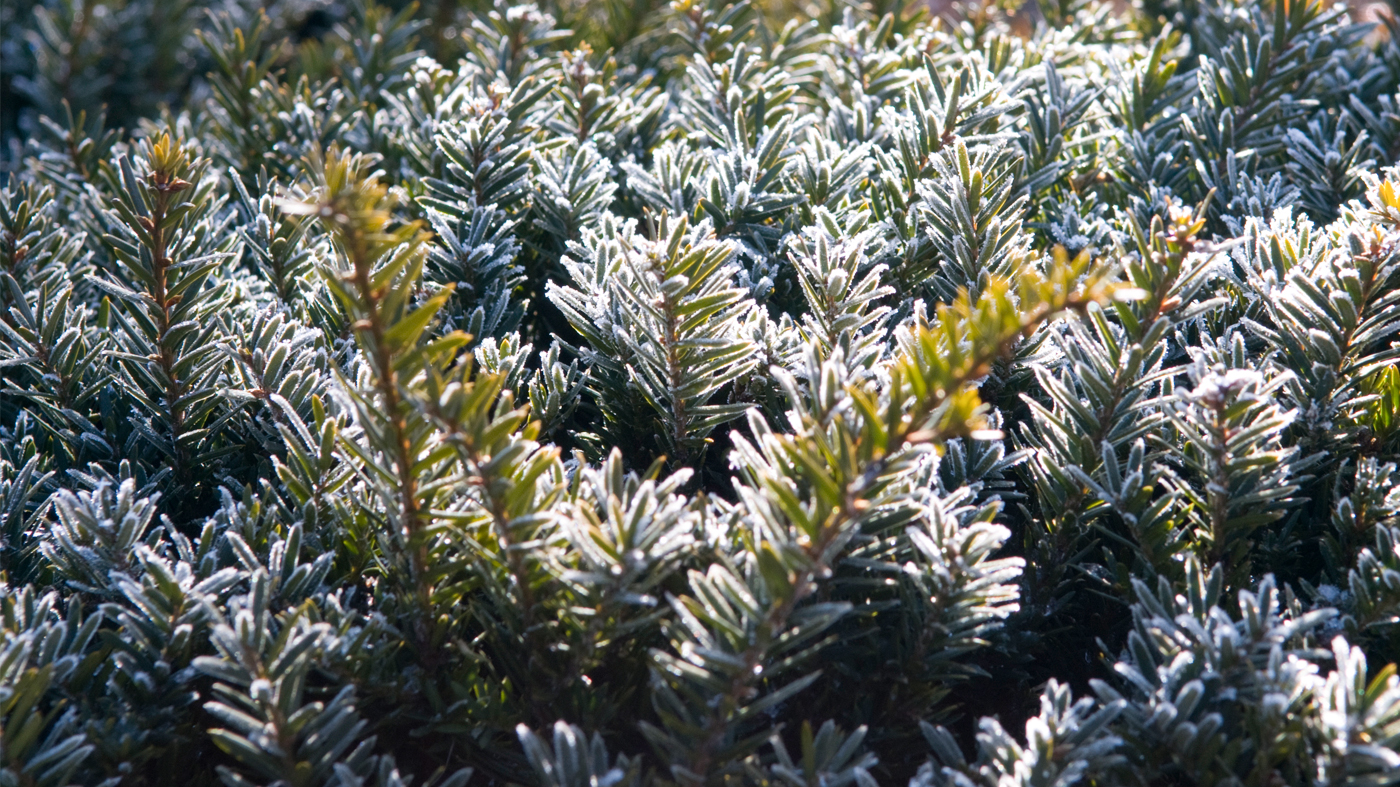
Susceptible Plants
All plants, especially those sited on parkways or near heavily salted and frequently shoveled areas, are susceptible. Evergreens are particularly vulnerable to salt and snow injury.
Description & Symptoms
Salt injures plants in two ways. It soaks into the soil with melting snow and is taken up by plant roots. It also becomes airborne, especially during dry winters, and is blown onto plants.
Ice and snow weigh down tree and shrub branches, causing breakage. This can be a serious problem for columnar evergreens with double terminal leaders, such as arborvitae, which may split at the top under the weight of snow.
Timing & Life Cycle
Salt and snow or ice damage is an ongoing issue throughout the winter, particularly during heavy storms.
Damage
Salt draws moisture from plant cells, causing tissue to dry out. Drying can occur whether the salt is taken into a plant through its roots or is absorbed through the surface of the leaves. Airborne salt often is more damaging than soil salt, which eventually leaches from the soil with melting snow and spring rains. Needled and broadleaved evergreens are more susceptible to salt damage because they retain their needles during the winter. Salt damage in evergreen plants results in yellowing and browning needles that eventually drop from the plant. Salt damage in deciduous plants may result in damaged buds, small and reduced foliage, early defoliation, and scorched leaf tips and margins.
Heavy snow may cause tree and shrub limbs to snap and break. Damaged tree limbs should be removed immediately as they may pose a hazard to pedestrians, power lines, or buildings.
Treatment & Controls
Avoid using de-icers, if possible. Consider the use of sand to improve traction on sidewalks and driveways. If the application of a de-icer is necessary, use the least amount possible. A calcium- or potassium-based de-icer is somewhat less damaging to plants than sodium chloride (salt). Shovel snow first, and avoid using a de-icer as a substitute for shoveling. Distribute shoveled snow as evenly as possible and avoid shoveling salt-laden snow on to plants.
After a heavy snowstorm, gently remove snow from branches that are bending to the ground, being careful not to damage branches. It is not necessary to remove snow from plants following light snowfalls. Do not attempt to remove ice from branches after an ice storm or free branches that might be frozen to the ground; allow the ice to melt on its own. Most evergreens that are bent over by winter snow recover their natural upright shape in the spring.
When planting evergreens, keep in mind that plants sited near parkways, entrances, and driveways may be exposed to salt in the winter. Burlap wrapping or barriers can be used to shield valuable evergreens from salt spray.
For additional information on preventing winter injury to plants, please contact Plant Information Services at (847) 835-0972 or email.

